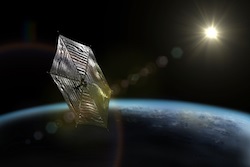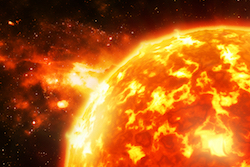Improved space weather forecasting protects vital infrastructure
The EU-funded Horizon 2020 PROGRESS(opens in new window) project used both spacecraft and ground-based data combined with state-of-the-art data assimilation methodologies to develop accurate and reliable forecasts of space weather. The goal is accurate prediction of space weather events in terms of occurrence and severity. Researchers successfully developed a set of European forecasting and nowcasting tools for space weather. These tools link all aspects of space weather from their origins on the solar surface to how they may affect the terrestrial environment and our modern technological infrastructure. “We have exploited our combined expertise to create a comprehensive set of forecasting tools, combining data-based modeling techniques with improvements to state of the art physics-based models,” says project coordinator Prof. Robertus von Fay-Siebenbürgen. New models PROGRESS partners created a European numerical magnetohydrodynamics (MHD)-based model by coupling two individual models to enable an advanced forecast of solar wind parameters. “The first, AWSoM, analyses the magnetic field at the solar surface, using it to simulate the solar atmosphere out to 25 solar radii. From this point outwards, the second model SWIFT propagates these solar winds out to 1.5 million kilometres upstream of the Earth,” explains Prof. von Fay-Siebenbürgen. The dynamics of particles in the radiation belts depends upon their interaction with plasma waves. PROGRESS scientists constructed a new set of statistical wave models to accurately reflect the acceleration and losses of particles within the terrestrial radiation belt region. Space weather hazards strongly affect the level of geomagnetic activity. PROGRESS has developed new models to forecast this activity using different approaches based on neural networks and NARMAX. PROGRESS also developed a set of models (SNB3GEO) to forecast the electron fluxes encountered by satellites at geostationary orbit. These models were shown to perform better than the tools currently available. To investigate the electron environment of the inner magnetosphere, PROGRESS uses two models. The Inner Magnetospheric Particle Transport and Acceleration Model (IMPTAM)(opens in new window) deals with low energy electrons, while the Versatile Electron Radiation Belt (VERB) model is for high energy electrons. Project researchers have made significant improvements in the way IMPTAM describes electron dynamics in the inner magnetosphere. Furthermore, the nowcast model has been modified to provide forecasts of the evolution of the low energy electron environment. Furthermore, PROGRESS has enabled the development of a new, improved version of VERB, VERB-3D, which now provides a two-day ahead data assimilative forecast for the high energy electron environment(opens in new window). In addition, PROGRESS performed separate studies to couple VERB with IMPTAM and SNB3GEO to further improve VERB forecasts. Benefits for both science and industry PROGRESS will benefit scientists working in the field of space weather and space physics in general. Prof. von Fay-Siebenbürgen comments: “The new models developed by the consortium are based on our improved understanding of the dynamics of the radiation belts. The results are important for the scientific community as they give novel insight into physical processes of plasmas in the near-Earth environment.” Industry will also profit as space weather can severely disrupt activities like satellite operations, communications, and aviation. This will also be beneficial for power companies who will receive prior warnings about geomagnetic storms that could damage their power grids. “All of these sectors can benefit from timely warnings of potential space weather hazards and so take steps to mitigate their effects on our technological infrastructure,” Prof. von Fay-Siebenbürgen concludes.







